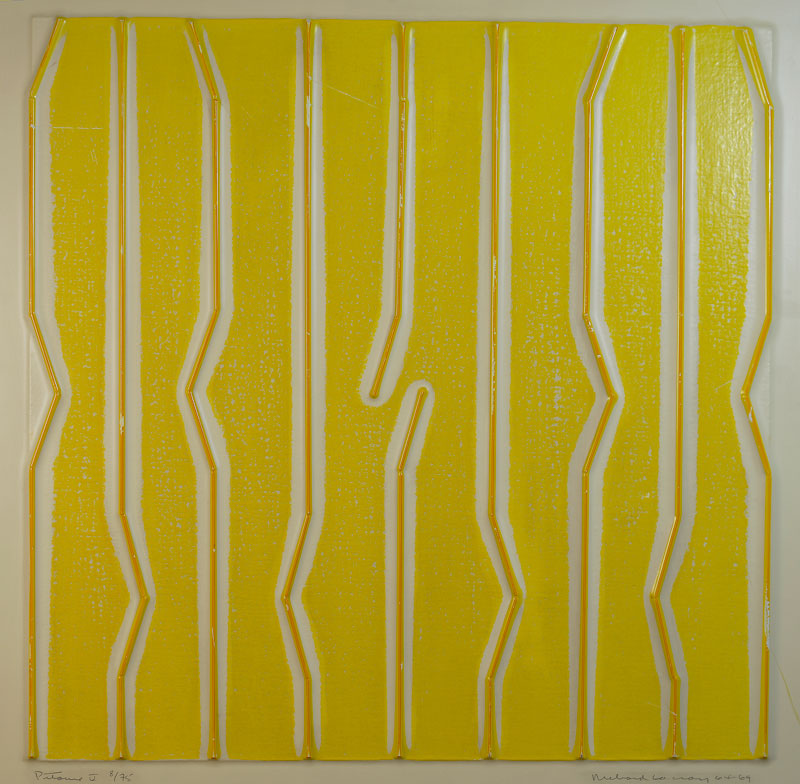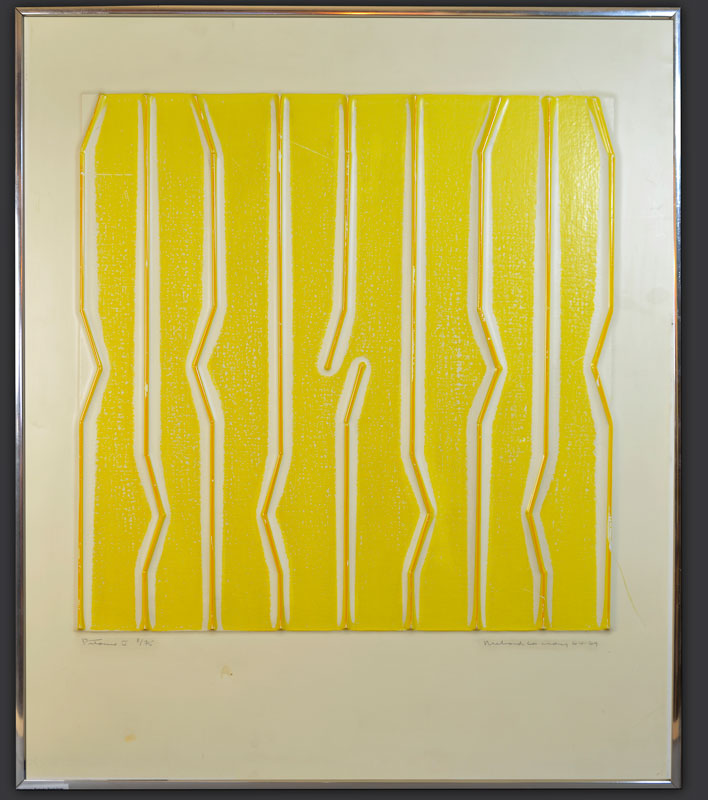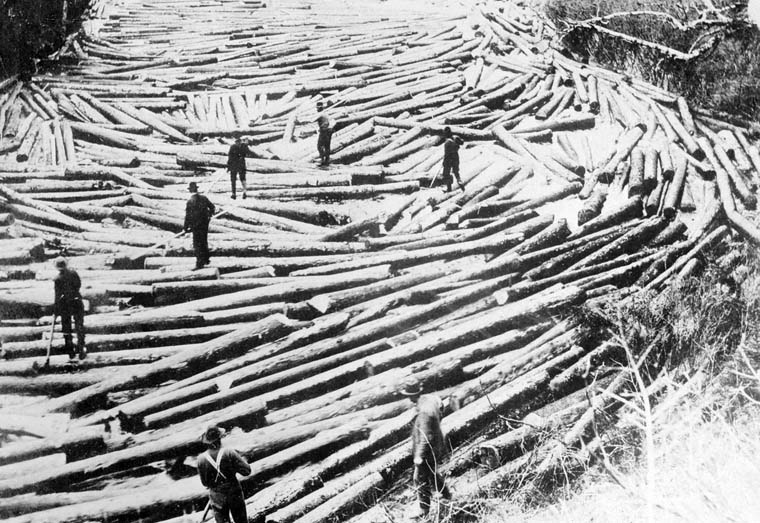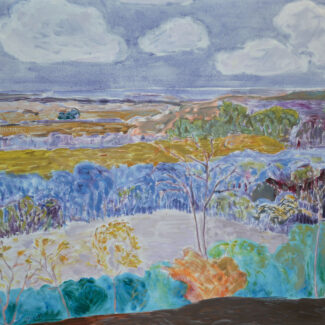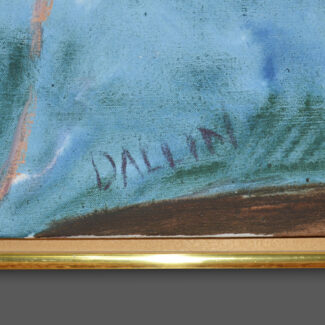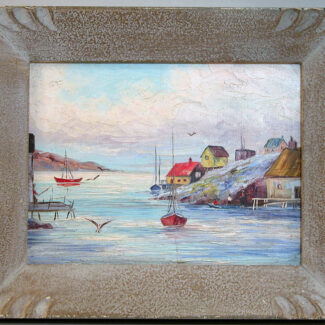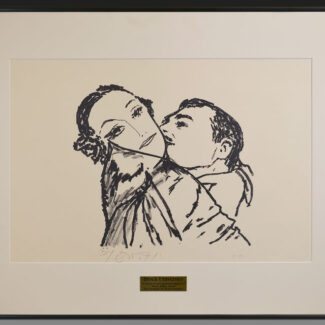Richard Lacroix (Canadian, b. 1939)
‘Metamorphose de la Pitoune, No. 5’, c. 1964-69
silkscreen on embossed polystyrene
(image) 18″ square
(framed) 25 1/2″ high x 21 5/8″ wide
Richard Lacroix is instrumental in the development of the Canadian art scene. Through his establishment of the Atelier libre de recherches graphiques and the founding of the Guilde Graphique in Montreal, Quebec in the early 1960, and his continued dedication to the study and roll of art through medium. He is, as Walter Jule points out in Sightlines: Printmaking and Image Culture, revolutionary to the “new attitude” enabling “the breaking down of barriers between art, artists, and the public.” Lacroix puts Marshall McLuhan’s “the medium is the message” to the test and elevates the graphic to the experiential.
This serigraph, no. 5, from the Métamorphose de la pitoune series, is executed on embossed polystyrene, backed with corrugated board; it is titled and numbered in pencil, lower left ‘Pitoune V 8/75’, and signed and dated in pencil lower right, ‘Richard Lacroix 64-69.’ As is common with Lacroix, the series was completed over a number of years with careful attention paid to the quality of the output – the print for Lacroix isn’t simply a medium of mass production but rather a skilled art form.
Continuously pushing the technology of the print, this time into sculpture, Lacroix has carefully embossed the artwork onto a sheet of polystyrene plastic then used various rollers to apply the cream, yellow and orange ink “painting” different colours and textures onto the different elevations. Robert Ayre describes the process: “Formerly, the print required as many plates and printings as there were colors, Lacroix uses one plate… After spreading the first color, the artist takes advantage of intaglio and relief by using hard rollers to apply the ink to the highest surfaces and soft rollers to get another colour into the hollows. There is more to it than that of course and one of the most fascinating, and rewarding, problems is preventing the inks from mixing with each other by using those with antagonistic oil consistencies. In this process, the print is conceived and brought into being as a whole, like a painting on canvas.”
Pitoune: a foresting term describing pulpwood logs, usually fur or spruce in Quebec, cut into a four foot sections, known in English as a ‘Bolt’
Biography: Represented in the collections of the National Gallery of Canada; Art Gallery of Ontario, Montreal Museum of Fine Arts; Musee d’art Contemporain de Montreal; Vancouver Art Gallery; Winnipeg Art Gallery; Edmonton Art Gallery; University of British Columbia; Hamilton Public Library



